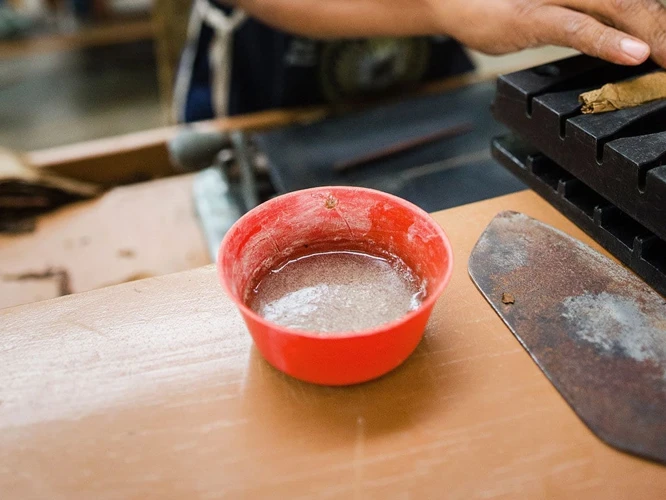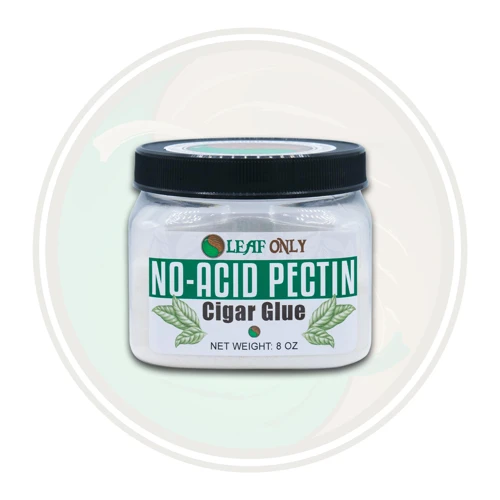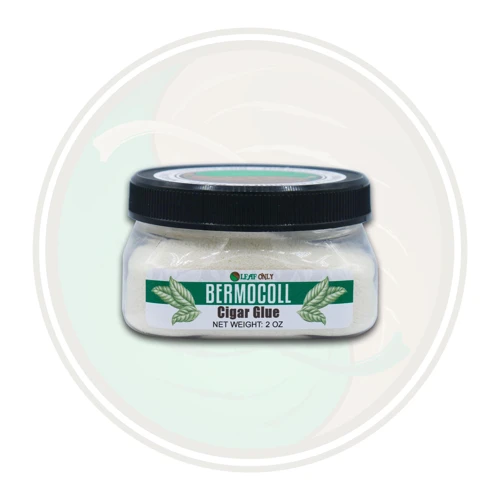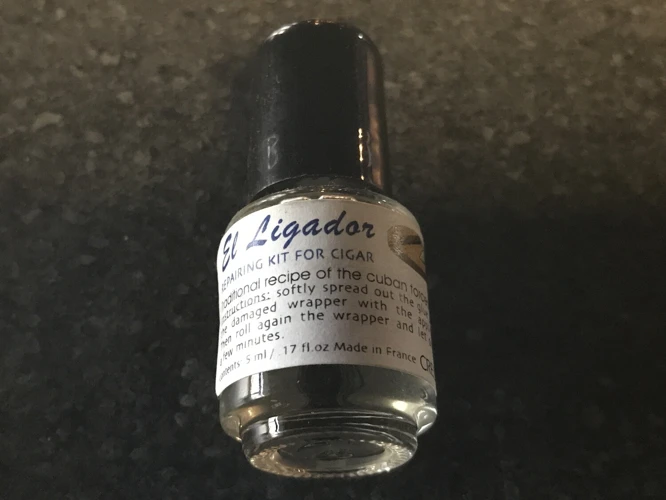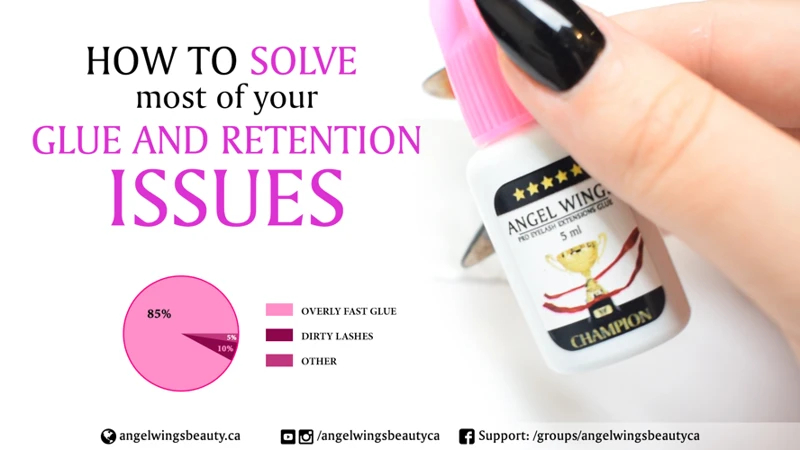Making the perfect cigar requires not only high-quality tobacco, but also the right tools and techniques. One essential tool for any cigar aficionado is cigar glue, which is used to seal the seams of a cigar for a smooth draw and even burn. While pre-made cigar glue is readily available, it can be expensive and may not meet your specific needs. This is where making your own cigar glue can be a great option. In this article, we will provide you with a comprehensive guide on how to make cigar glue step-by-step, as well as information on the types of cigar glue, why you should make your own, testing and storage, and safety precautions to keep in mind. So, let’s dive in and learn how to make your own high-quality cigar glue that can enhance your smoking experience.
What is Cigar Glue?
Cigar glue, also known as cigar adhesive or cigar paste, is a kind of glue specifically designed for cigar rolling. It’s a necessary component in making cigars, as it’s what holds the tobacco leaves together to form the cigar’s body. Although there are many types of glue in the market available for different purposes, cigar glue is specifically blended to meet the unique demands of cigar-rolling. It should not be confused with other types of glue available in the market. If you are wondering which type of glue to use for specific projects, check out our article on ‘What Kind of Glue‘ to learn more. Let’s explore cigar glue in more detail.
Types of Cigar Glue
When it comes to cigar glue, there are two main types: vegetable-based glue and animal-based glue.
Vegetable-based glue is typically made from gum arabic, a natural adhesive made from the sap of the acacia tree. This type of glue is easy to work with and is less prone to cracking compared to animal-based glue. It is also safe for vegans to use and is a great alternative for those who are allergic to animal-based glue.
Animal-based glue, on the other hand, is made from the connective tissues of animals, such as rabbits and horses. This type of glue has been traditionally used in cigar making for centuries due to its strong and durable bond. Some cigar makers prefer animal-based glue as it dries to a hard finish. However, this type of glue can be difficult to work with as it tends to dry quickly and can become brittle over time.
It is important to note that some cigar makers may also use synthetic glue, which is a man-made adhesive. Synthetic glue is typically cheaper than natural glues, but it may not provide the same level of durability and strength as natural glues.
As you can see, there are several types of cigar glue available. In this article, we will focus on making vegetable-based cigar glue. If you’re interested in making other types of glue, check out these articles:
– How to Make Glue Without Glue
– How to Make Methyl Cellulose Glue
– What Glue is Best for Wall Stickers?
– Which is Stronger: Glue or Tape?
– How to Dry Clear Glue Fast
– How to Glue a…
– How to Make Soap Slime Without Glue or Activator
– How Much Wood Glue to Use
– How to Make Rolling Paper Glue
Why Make Your Own Cigar Glue?
Why should you bother making your own cigar glue when you can easily buy it from a store or online supplier? While it may seem like a hassle, there are actually several good reasons to consider making your own cigar glue. For starters, many pre-made cigar glues contain chemicals and additives that some aficionados prefer to avoid. By making your own glue, you have total control over the ingredients and can customize the recipe to your liking.
Some cigar enthusiasts enjoy the process of crafting their own cigar glue and find it to be a satisfying part of the overall cigar-making experience. Additionally, making your own glue can save you money in the long run, as many store-bought options can be quite pricey.
Another benefit to making your own cigar glue is that it can be a fun and educational activity to share with others. Inviting fellow cigar lovers to gather and make their own glue can be a great way to connect and share knowledge. Plus, by experimenting with different ingredients and techniques, you may discover a concoction that is uniquely suited to your preferences.
In short, while it may not be for everyone, making your own cigar glue can be a rewarding and enjoyable endeavor that allows you to have complete control over the cigar-making process while saving you money and providing a fun activity for you and your fellow cigar enthusiasts to enjoy.
Step-by-Step Guide on How to Make Cigar Glue
Are you tired of using store-bought cigar glue that doesn’t meet your standards? Making your own cigar glue is an easy and cost-effective solution that is perfect for those who prefer a customized smoking experience. In this section, we will provide you with a step-by-step guide on how to make cigar glue from scratch. By following these instructions, you’ll be able to create a high-quality adhesive for your cigars that provides an even burn every time. So, let’s get started!
Materials Needed
To begin making cigar glue, you will need to gather a few key materials. Here is a rundown of everything you will need:
- PVA glue – This is the main ingredient in any cigar glue recipe. PVA stands for polyvinyl acetate, which is a type of thermoplastic adhesive. You can find PVA glue at most craft stores and hardware stores. Alternatively, you can also use white school glue.
- Distilled water – This is used to dilute the PVA glue and create the right consistency for applying the glue to your cigars.
- Glycerin – This is an optional ingredient that can help prevent your cigars from cracking or splitting. It is a natural humectant, which means it can help keep your cigars moist.
- Syringe or dropper – This will help you measure out precise amounts of both the glue and the water.
- Bowl or container – You will need a container to mix your glue and water together.
- Stirring utensil – You can use a spoon or stir stick to mix your glue and water together.
Make sure you have all of these materials on hand before you begin making your cigar glue. As mentioned earlier, glycerin is an optional ingredient. However, if you are making cigar glue for the first time, we recommend including it in your recipe. It can help ensure that your cigars stay moist and don’t crack or split.
Instructions
To make your own cigar glue, follow these simple step-by-step instructions:
- Measure out the ingredients: You will need to measure out 1 teaspoon of gum arabic, 1 teaspoon of glycerin, and 4 teaspoons of distilled water.
- Combine the ingredients: In a small bowl, combine the gum arabic and glycerin. Mix well until the gum arabic has dissolved and the mixture has a smooth consistency.
- Add distilled water: Slowly add the distilled water to the mixture, stirring constantly. Continue stirring until the mixture becomes a thin, runny consistency.
- Let the mixture sit: Once the mixture is fully combined, let it sit for about 10 minutes to allow it to thicken slightly.
- Transfer the glue to a container: Using a small funnel or pipette, transfer the cigar glue into a small glass or plastic container with a tight-fitting lid.
- Label the container: Be sure to label the container with the date it was made, as well as any other relevant information such as type of cigar glue or specific ingredients used.
- Store the cigar glue: Store the container in a cool, dry place away from direct sunlight.
Remember, homemade cigar glue may not have the same consistency as store-bought glue, so it may take some practice to achieve the desired results. Don’t be afraid to play around with the recipe to find what works best for you. If your cigar glue is too thin or too thick, try adjusting the amount of water or gum arabic. And be sure to test your cigar glue before using it on your cigars to avoid any mishaps.
Testing Your Cigar Glue
Once you have successfully made your own cigar glue, it’s essential to test its effectiveness before putting it to use. One of the easiest and most straightforward methods for testing it is to try rolling a cigar with the glue you have made.
Roll a Test Cigar
Start by selecting a wrapper leaf, binder leaf, and filler tobacco of your choice. Carefully apply the glue to the edges of the wrapper before rolling it around the binder and filler tobacco. Once you have tightly rolled it, trim the excess wrapper and light it up.
Observe the Burn and Ash
When you light the cigar, take note of how evenly it burns. If the glue is working correctly, the cigar should burn evenly without any canoeing or uneven ash. Additionally, the ash should be compact and hold its shape, indicating that the glue is strong enough to hold its form.
Check the Draw
The draw of a cigar refers to how easily air passes through it. If the glue is too thin or weak, it won’t hold the tobacco together properly, and the cigar will have a poor draw. To test the draw of your test cigar, take a few puffs and see if the smoke comes out smoothly or if it feels clogged.
Evaluate the Flavor
Finally, don’t forget to evaluate the flavor of your cigar. While the glue won’t affect the taste, a poorly rolled cigar can negatively impact the overall smoking experience. If the glue is working correctly, you’ll enjoy a well-constructed cigar with a satisfying flavor.
By using these easy methods, you can ensure that the cigar glue you’ve made is up to par and ready to use for your future smoking endeavors.
Storage and Shelf Life
Proper storage and shelf life of homemade cigar glue are essential to maintain its quality and effectiveness. As with any adhesive, cigar glue can dry out and lose its bonding strength if not stored correctly. It is important to take necessary measures to ensure that your cigar glue remains fresh for future use.
Storage: Once you have made your cigar glue, the first thing you need to consider is a proper storage container. The ideal storage container for cigar glue is an airtight glass jar. Glass jars offer a stable environment for the glue, preventing any moisture and air from entering the container. Glass jars are non-reactive, which means that no chemical interactions can take place between the glue and the container. Make sure to clean the jar thoroughly before adding the glue.
Shelf Life: Cigar glue, whether homemade or store-bought, has a limited shelf life. The exact shelf life of cigar glue varies depending on several factors, such as the type of glue, storage conditions, and the ingredients used. In general, homemade cigar glue can last up to six months if stored properly. After that, the glue may lose its bonding strength and become dry and brittle.
To extend the shelf life of your cigar glue, store it in a cool, dry place away from direct sunlight. Room temperature is ideal, and extreme temperatures should be avoided. Keeping the glue in the refrigerator is also a good option, as it can slow down the drying process and prolong the shelf life.
Checking the Quality: Before using your cigar glue, it’s essential to check its quality to ensure that it is still effective. To do this, spread a small amount of glue on a scrap piece of tobacco and wait for it to dry. Once the glue is dry, press the two edges of the tobacco together and hold them for a few seconds. If the bond is strong and secure, the glue is still good to use. However, if the bond is weak or the edges separate, it’s time to make a fresh batch of glue.
Proper storage and shelf life are critical when it comes to maintaining the quality and effectiveness of your homemade cigar glue. Store it in a clean, airtight container in a cool, dry place, and check for the glue’s quality before each use. By following these simple steps, you’ll be able to use your cigar glue for a more extended period, saving you money and time in the long run.
Troubleshooting Common Issues
Making cigar glue may seem like a simple process, but sometimes issues can arise during the process. Here are some common issues cigar makers face when making their own glue and how to troubleshoot them:
Issue: Glue is too thick or too thin
If your cigar glue is too thick or too thin, it can affect the way it is applied and the overall quality of your cigar. If the glue is too thick, it may be difficult to apply it evenly and smoothly. If it is too thin, it may not hold the cigar together.
Solution: Adjust the amount of water used
The thickness of your cigar glue can be adjusted by the amount of water you use when making the glue. If your glue is too thick, add a small amount of water and mix well. If it is too thin, add a small amount of cigar glue powder and mix well. Keep adjusting the water and cigar glue powder until you achieve the desired consistency.
Issue: Glue is not sticking properly
If your cigar glue is not sticking properly, your cigar will fall apart or unravel.
Solution: Increase the amount of glue used
To ensure that your cigar glue sticks properly, you may need to increase the amount of glue you use. Apply a thin layer of glue on the wrapper leaf and then press the filler into place before rolling. Make sure the glue is evenly dispersed and covers the entire surface of the wrapper.
Issue: Glue is drying too quickly or too slowly
If your cigar glue is drying too quickly or too slowly, it can affect the quality of your cigar.
Solution: Adjust the water temperature and humidity level
The temperature and humidity level of your work area can affect how quickly your cigar glue dries. If it is too hot, the glue may dry too quickly, and if it is too cold, it may dry too slowly. Additionally, a dry environment can cause rapid drying, while a humid environment can cause slow drying. Adjust the water temperature and humidity level to ensure that the cigar glue dries at a suitable rate.
Issue: Glue is too lumpy or has clumps
If your cigar glue has lumps or is too lumpy, it can affect how it is applied and the overall quality of your cigar.
Solution: Mix the glue thoroughly
To avoid lumps and clumps in your cigar glue, mix the glue thoroughly using a spatula or a whisk. If necessary, add more water and mix until the desired consistency is achieved. Make sure to stir the mixture thoroughly and evenly to ensure that the glue is smooth and consistent.
By troubleshooting these common issues when making your own cigar glue, you can ensure that your cigars are of the highest quality and will burn evenly and smoothly.
Safety Precautions
When making cigar glue, it’s important to take certain safety precautions to avoid any accidents or mishaps. Follow these tips to ensure a safe and successful cigar glue-making experience.
Wear Protective Gear: When handling any chemicals or substances, always wear protective gear such as gloves and safety glasses to avoid skin or eye irritation.
Ventilation: Ensure that the area where you are making your cigar glue is well-ventilated with open windows or a fan. This will prevent harmful fumes from building up in the air.
Proper Disposal: Dispose of any unused or excess materials properly according to the packaging instructions. Avoid pouring chemicals down the drain or in the trash as this can cause harm to the environment.
Avoid Inhaling: When mixing chemicals or substances together, avoid inhaling any fumes. Use a mask to cover your nose and mouth if necessary.
Keep Out of Reach of Children: Store all materials used in making cigar glue safely out of the reach of children and pets.
By taking these safety precautions, you can have a safe and successful experience making your own cigar glue. If you experience any adverse reactions, seek medical attention immediately.
Conclusion
After following this comprehensive guide on how to make cigar glue, it’s clear that making your own cigar glue is not only easy, but can also save you money in the long run. With the step-by-step instructions and list of required materials, anyone can make these cigar glues in the comfort of their own home.
It’s important to remember that there are different types of cigar glue, and each has its own unique properties that can enhance your smoking experience. By making your own cigar glue, you have the flexibility to experiment with different ingredients and find the perfect combination that suits your taste.
Additionally, testing and storing your cigar glue properly is important to ensure that it functions as intended. By following the guidelines outlined in this guide, you can ensure the longevity and effectiveness of your homemade cigar glue.
As with any DIY project, safety precautions should always be taken. It’s important to handle the materials with care and follow the instructions closely to prevent any mishaps.
In conclusion, making your own cigar glue is a simple, cost-effective way to enhance your smoking experience. With the variety of cigar glue types and the ability to customize your own blend, there’s no reason not to try making your own cigar glue today. So grab your materials and get started on your journey to the perfect cigar glue.
Frequently Asked Questions
What type of cigar glue should I use for my cigars?
There are generally two types of cigar glue: vegetable-based and animal-based. Vegetable-based glues are suitable for most cigars, but animal-based glues may be preferred by some connoisseurs for their stronger hold.
Can I use regular glue for cigars?
No, regular glue is not suitable for cigars as it may contain harmful chemicals and can affect the taste and texture of the cigar.
Why should I make my own cigar glue?
Making your own cigar glue gives you full control over the ingredients and can result in a more natural and safer product for your cigars. Plus, it can be a cost-effective option in the long run.
What materials do I need to make cigar glue?
You will need distilled water, gum arabic, and glycerin. Some recipes may also call for alcohol or essential oils for added flavor.
How do I mix the ingredients for cigar glue?
You will need to dissolve the gum arabic in distilled water, and then add in glycerin and optional ingredients if desired. Mix well and let the solution sit for a few hours to thicken.
What is the shelf life of homemade cigar glue?
If stored properly in an airtight container, homemade cigar glue can last for several months to a year. However, it is recommended to make small batches as needed for optimal freshness.
How do I apply cigar glue to my cigar?
Using a small brush or cotton swab, apply a small amount of glue to the area where the wrapper and cap meet. Use just enough to create a secure seal, but avoid over-applying as excess glue can impact the taste and burn of the cigar.
How long should I wait after applying cigar glue before smoking?
It is recommended to let the glue dry and set for at least 24 hours before smoking the cigar to ensure a proper seal.
What should I do if my cigar glue is not holding?
Try applying a slightly larger amount of glue and press down firmly on the cap to secure the seal. You can also try a different type of cigar glue or consult with a professional if the issue persists.
Is cigar glue safe to use?
When used properly and made with safe ingredients, cigar glue is generally safe to use. However, it is important to use caution and handle the glue and cigars with care. Always follow proper safety guidelines and ventilation when mixing and using the glue.
